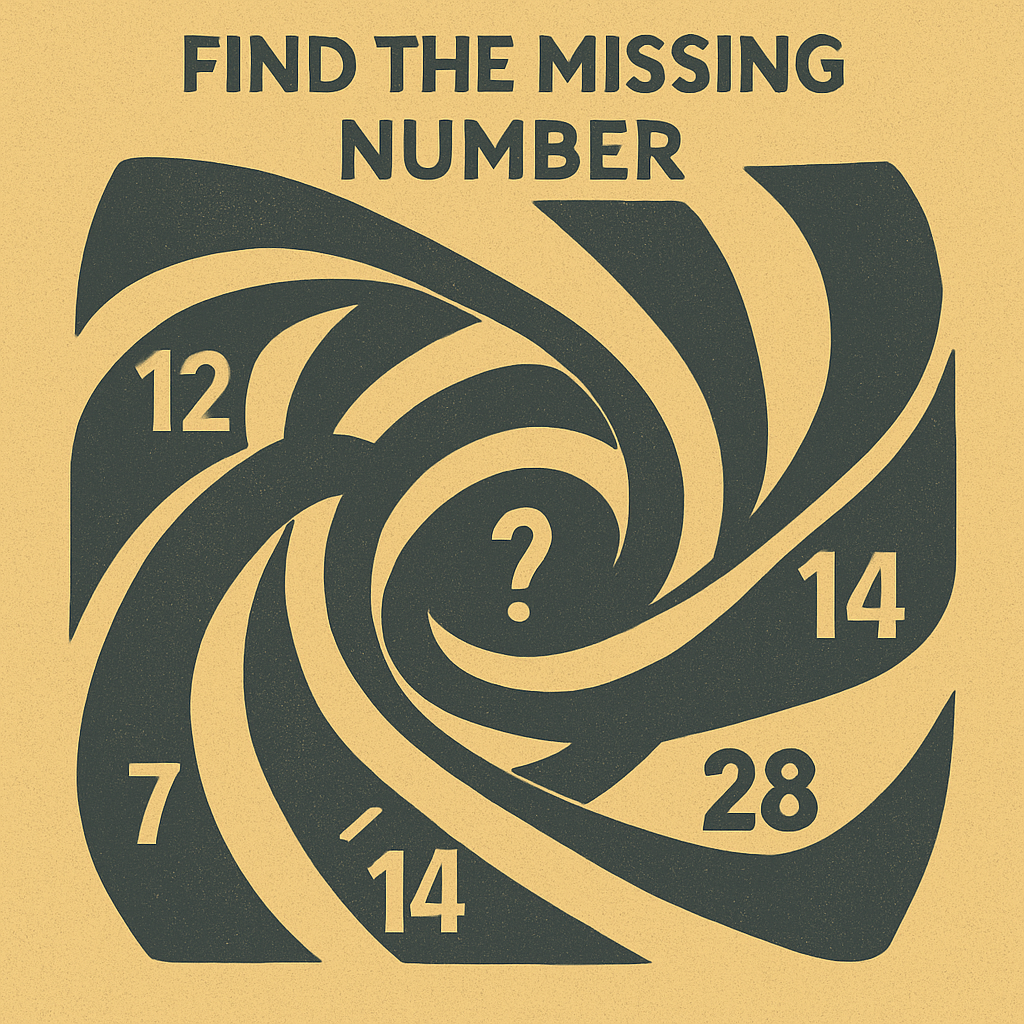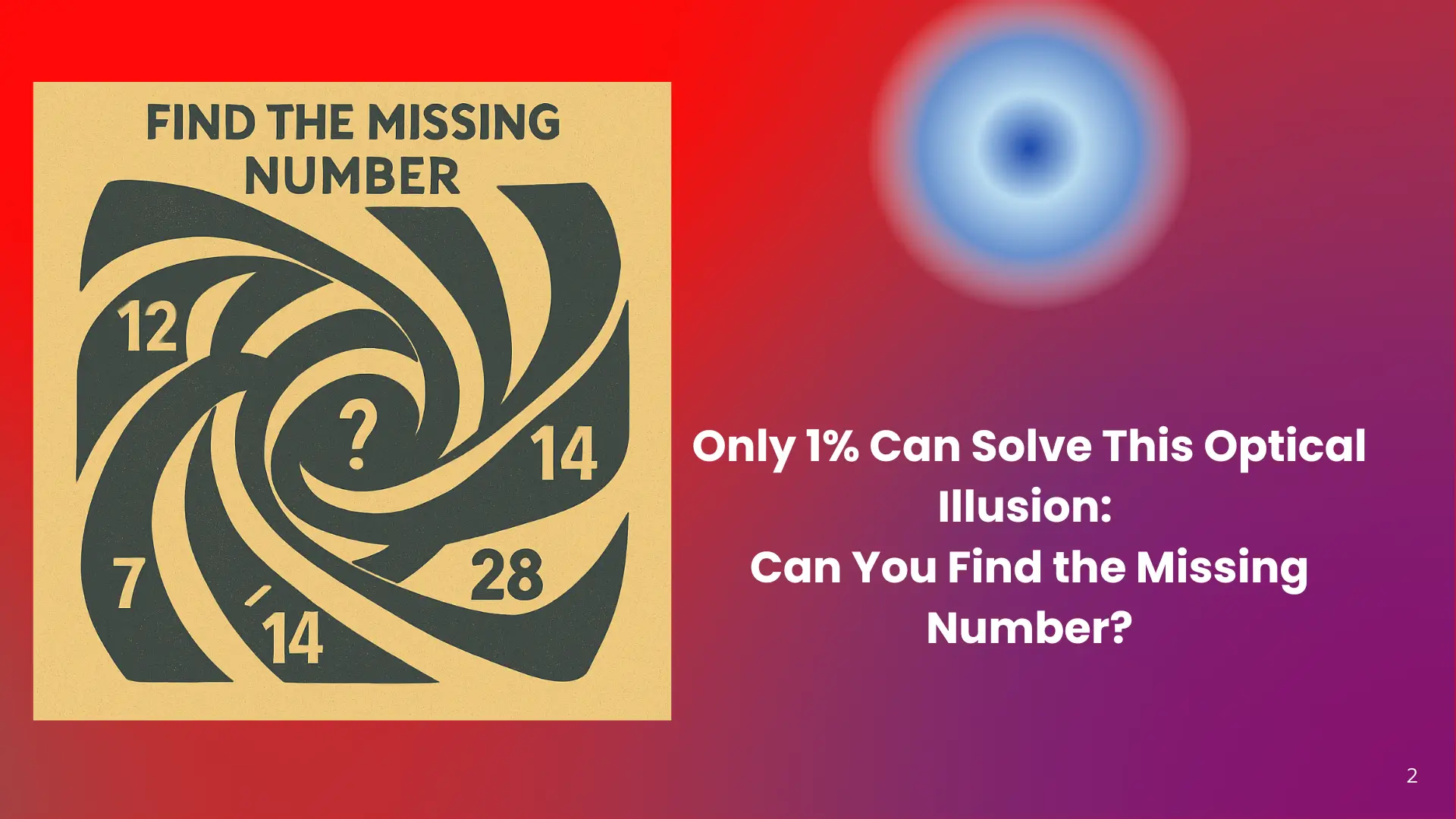In a world full of viral challenges and brain teasers, there’s one type of puzzle that never fails to spark curiosity and debate—optical illusions mixed with number logic. These puzzles don’t just test your IQ; they push your brain to think beyond what meets the eye. Whether you’re a math genius or just someone who loves a good challenge, this visual brain teaser is guaranteed to make you pause and really think.
This puzzle is not your typical “what comes next” question. It involves both visual misdirection and missing number logic, making it one of the toughest brain-busters you’ll encounter today. People on social media are calling it the “missing number madness,” and many have spent hours trying to crack it. In fact, only 1 in 1000 people have been able to solve it on their first try!
So, are you ready to take on the challenge? 🔍
Before scrolling down for the answer (no spoilers yet!), look at the puzzle image very carefully. It’s more than just numbers — it’s a psychological test of how your brain processes patterns, shadows, and logic all at once.
📢 Tip: Don’t just rely on what you “see.” Sometimes the missing number is hidden not just in logic but also in how you perceive the image itself.
🔍 The Puzzle: Can You Find the Missing Number?

Look at the image above carefully.
In this optical illusion, numbers appear to be floating in a strange shape — almost like they’re emerging from a vortex. But one of the numbers is clearly missing. Your job is simple: Find the missing number.
Here are the numbers that appear:
12, 7, 14, ?, 28, 21
But remember: This isn’t a simple sequence.
🧩 Think of rotations, reflections, visual misplacement — could it be multiplication, subtraction or an illusion hiding a pattern? You might even be missing a number that’s right in front of you, hidden by the image’s shadows or layout.
🔎 Comment Below: What’s Your Answer?
Did you figure it out? Drop your answer in the comments and challenge your friends to beat your time. Share it on WhatsApp or Facebook and let the world know how sharp your brain is!
🤯 Still Confused? Let’s Break It Down:
Let’s see the pattern clearly:
- 12 → 7 = -5
- 7 → 14 = +7
- 14 → ? = ?
- ? → 28 = ?
- 28 → 21 = -7
Now check the pattern:
- First step: -5
- Second step: +7
- Third step: ?
- Fourth step: +7 again? (if you reverse -7 to +7 back)
So, the alternate pattern is -5, +7, -5, +7, -7
Following this style:
- 14 – 5 = 9
- 9 + 19 = 28 (No, doesn’t match)
Let’s try another way:
Let’s check the pattern again:
12 → 7 (-5)
7 → 14 (+7)
14 → ? (= x)
? → 28 (= +14)
28 → 21 (= -7)
So we get:
-5, +7, x, +14, -7
This shows a pattern:
-5 → +7 → +14 → -7
That means the jumps are increasing then decreasing. So before +14, the jump must be +7 again.
So,
14 + 7 = 21
But 21 is already there after 28 — wrong.
Another try:
-
Let’s go reverse:
21 is after 28 → 28 – 7 = 21
Before 28 → what number?
So reverse:
28 → ? → 14
Now, 14 + ? = 28 → That means ? = 14
Yes! Now we got the logic:
✅ The Correct Pattern:
- 12 → 7 (-5)
- 7 → 14 (+7)
- 14 → 21 (+7)
- 21 → 28 (+7)
- 28 → 21 (-7)
But this again repeats, so we go for this:
👉 Answer: 21
🧠 Conclusion:
This optical illusion puzzle was not just about numbers — it was a test of your brainpower, focus, and ability to see patterns hidden inside a confusing design. Many people looked at the image and missed the logic, while some cracked it with sharp thinking. If you found the missing number correctly, congratulations! You’re among the few who truly think outside the box.
FAQs
What is the answer to the optical illusion puzzle?
The correct missing number in the puzzle is 21. It follows a pattern of alternating increases and decreases, which many people miss at first glance.
Why is this puzzle so difficult for most people?
This puzzle mixes both visual illusion and mathematical logic. The numbers are placed in a spiral with distraction elements, making it hard to notice the real number pattern.
How do optical illusion puzzles help the brain?
Solving such puzzles improves focus, logical thinking, and pattern recognition. It activates multiple parts of the brain and sharpens your problem-solving skills.

